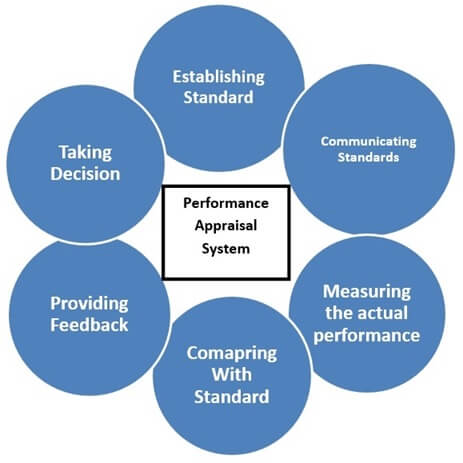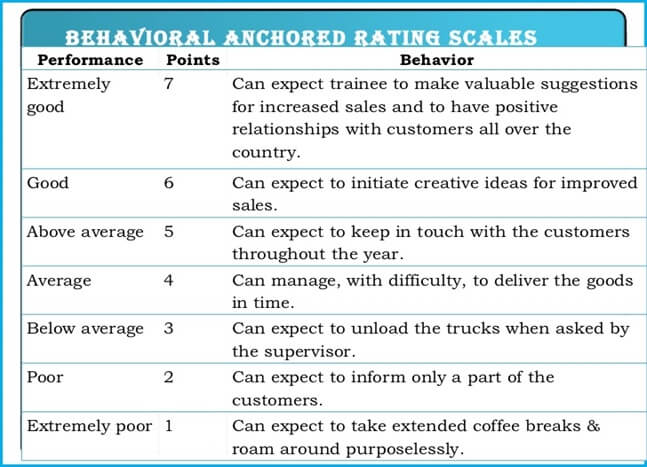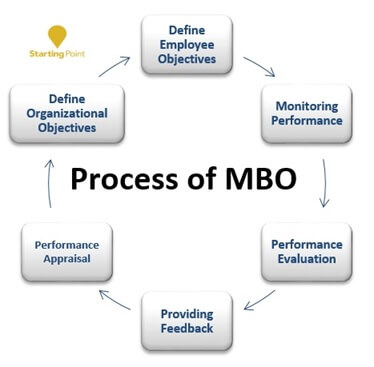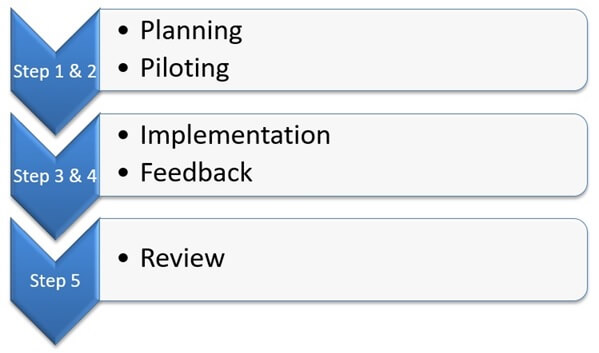Performance Appraisal Process Assignment Help
Performance appraisal is also known as performance review, evaluation or employee appraisal. It refers to an activity wherein performance of an employee is evaluated. It comes under career development and regular reviews of performance of the employee.
Companies generally have limited funds to give rewards to employees. So, performance appraisal helps the company in determining how to allocate funds.
History of Performance Appraisal
Performance appraisal can be traced in early 20th century. It was a distinct and formal procedure of the evaluation of performance and appraisal can be seen from the time of Second World War.
It is one of the arts used to perform in past. Dulewicz (1989) says, "... a basic human tendency to make judgments about that one is working with, as well as about oneself." It is one of the methods which are followed universally. Had it not been there; informal, unstructured methods would have been followed by the organization.
Without having a fair and structured performance appraisal system in the organization, it can create serious problems for the organization related to motivation, ethical and legal factors.
Appraisal system used to justify the salary or wages of the worker or employee. Material outcomes were directly related to the wages or salary. If an employee’s performance found less than the expected then it used to be followed by a cut in the salary. And he used to be rewarded with increment at the event of an increase in the performance.
It was found that it was not the only factor which was deciding the motivation of the employee; other factors were also equally responsible. Due to this fact, emphasis on the monetary rewards was rejected. The United States found the need of performance appraisal in the 1950s and general model of performance appraisal began from that time.
Performance Appraisal Process Assignment Help By Online Tutoring and Guided Sessions from AssignmentHelp.Net

Objectives of Performance Appraisal
Feedback: Like the objective of any other method, providing feedback is also one of the major objectives of the company. Employee seeks for feedback and wants to know how much they have achieved throughout the year. So, performance appraisal makes sure that they receive the feedback in time and improve their performance accordingly.
Decisions related to promotion or transfer: Who doesn’t want to promote to a better place? Everybody wants to go ahead in life. So is the case with the employees. Employers, on the basis of the performance appraisal, can make decisions related to promotion or transfer of an employee. For example- An employee, who is doing well or has good leadership skills, can be transferred to a place where the business of the company is low.
Encouraging: An employee will be encouraged to improve the performance. An employee cannot improve his/her performance without knowing the place he/she is standing at. Performance appraisal points out key areas where employee needs to improve his/her performance.
Goals Setting: Without a pre-determined target, an employee will not feel motivated to do work. It is important for the organization to set goals for the employees according to their abilities and skills. Performance appraisal helps in knowing the employers about the performance of employees and on the basis of the skills possessed by the employee, a goal can be set. For example- If an employer sets a higher goal for an average employee, he will not be able to achieve it and it will result in an increase in the cash outflow of the company.
Counseling: Not every individual possesses same skills. There are employees in an organization who are not able to achieve the target. Performance appraisal helps the employers in knowing the degree of the performance of an individual and with this; they can help the employees in coming out of problems if any.
Hiring Decisions: A Company cannot assess the employee before seeing his/her work. An employee can be too good in the process of the interview but how he manages the theory of the books in real condition can be assessed during the job only. So, a company can know whether they have hired the right person for the job or not.
Training Decisions: A company can decide whether an individual requires training or not. It can be accessed through the performance of the individual.
Benefits of performance Appraisal
Communication: It generally happens in the organization that managers and employees do not involve themselves much in the communication process. Such problems can be resolved with performance appraisal. If the appraisal is used as an opportunity to describe the criteria on which performance is judged through the use of examples then the employee will get the better understanding of the work he has to do.
Promotion,: Evaluating the job performance can help the managers to check out the promotion programs for the employees. Performance appraisal system will let the company know the benefit of each and every individual and the most beneficial one will be kept by the company by giving promotion. Promotion is not just an increase in the position but also workload. The workload of managers is shifted to the employees. And not only the workload will increase, but it will act as a road to the motivation for the employees.
Employee’s Progress: This process of evaluation of performance helps the manager and HR to outline preparing policies and programs in much better way in order to foresee and put into practice any progress expansion for employees as well as for employer. The progress of every employee has to be equally viewed in order to enhance a chance for progression in their career.
Record of Compensation Structure: It is a duty to keep the salary structures, compensation packages of bonus, extra allowances, etc. Maintaining of records will help the organization in comparing the cost of employees with the benefits provided by them. It will help the organization in knowing whether the employee has worked in proportion to the salary.
Recruitment and Selection: Appraisal system can provide the organization with the data related to the existing employees’ performance. The company can see whether they have enough resources or not. Or whether the employees working in the organization are efficient or not. The company can make the hiring decision of the employees on the basis of this appraisal system.
Performance Appraisal Process

Establishing Standards- First step in the process of performance appraisal is establishing the standard. It will be used as a base for comparing the actual performance of the employee. In this step, standards are set in such a way which judges the employee’s performance as successful or unsuccessful. Standards should clear, understandable and most importantly measurable.
Communicating Standards- Standards should be communicated to the employees of the organization and it is the responsibility of the management to communicate. Management should make them understand the standard and clear the doubts if any. Modification in the standards can also be done at this stage according to the feedback from the employees.
Measuring the actual performance- It is the most important and difficult step in the process of performance appraisal. In this step, managers have to measure the performance of the employees. It is a step which is followed throughout the year. Managers must take care of the tools that they are selecting and should not be biased with the process.
Comparison- This is the forth step of the process and now the standards which are set by the company will be compared with the actual performance of the company. The result can be negative or positive both. This step includes recalling, evaluating, and analysis of data related to the employee’s performance.
Providing Feedback- In this step, the result of the appraisal system is communicated with the employees on a one-to-one basis. Problem, solution, and result are communicated in a way to solve the problem and reaching an agreement. It should be communicated in a positive way because it can affect the performance of the employee in the future. The manager should provide them the area where they need to work on. It should be carefully done because emotional outburst can be a result of not handling in a careful manner.
Decision Making- Last and final step of this process is decision making. The sole objective of the firm to make decisions about employees and decisions related to transfer, demotion, promotion etc. will be taken this step. Corrective actions for the negative deviation are also taken in this step. The decision taken by HR manager should match exactly with performance appraisal results of employees to avoid grievance or disturbances in between them, as they affect overall performance of the organization.
Performance Appraisal Rating Factors
A) General
- Adaptability- Efficiency with which employee works under stress.
- Assertiveness- How much committed an employee is toward his goals?
- Attendance- How much time he is devoting to the work?
- Communication- How much an employee listens, conveys and receives ideas?
- Creative- How much an employee generates innovative ideas?
- Customer- How much an employee is customer oriented?
- Customer Service-
a) Serves customers in a manner that increases their confidence and knowledge to resolve their own problems
b) Acknowledges shortcomings when appropriate
c) Reaffirms commitment to professional service - Dependability- How much an employee is dependent on the employer for supervision?
- Job Knowledge- How much an employee knows about the job he is working for?
- Judgment- How efficiently an employee can analyze, evaluate and select a course of action for a problem?
- Initiative- How much capable an employee is of performing the task independently?
- Interpersonal Relations- How much supportive and friendly an employee is with the peers?
- Management Skills- How much management skills an employee possesses?
- Planning and Organizing- How much planning and organizing the activity an employee can do?
- Quality of Work- How much efficient an employee is in setting high standards for personal performance?
B) Team Based
- Consensus Building- It is the extent to which an employee makes work relationship with others to effectively address a problem.
- Team work- It is the degree to which the employee works well in a team.
- Cooperation- It is the extent to which an employee cooperates with customers, public and co-workers.
C) Supervisory Factors
- Cost Effectiveness- How much efficiently an employee makes use of its resources?
- Delegation- How much effective an employee is at the time of delegation and supervision?
- Development of Subordinates- It is employee's ability to effectively evaluate skills, knowledge, aptitudes, interests and developmental needs bearing on individual and group work performance.
- Leadership- How efficiently an employee can direct his subordinates?
- Performance Appraisal-
a) Provides informal performance feedback on a regular basis
b) Acknowledges good performance and discusses performance problems
c) Prepares precise written annual evaluations
Traditional Methods of Performance Appraisal
1) Rating Scales Method- In this method, a numerical scale is prepared ranging from excellent to poor. It represents the job evaluation criteria such as output, attendance, attitude etc. So, an employee is given the rating based on his performance against set criteria. On the scale, 1 represents poor performance and 10 represents positive feedback. In this method, an employee is assessed by the supervisor, colleagues, subordinates and sometimes customer, which all depends on the nature of the job.

2. Checklist- In this method, the person who is rating an employee is given a list of behavior of the employee on the job. The check list contains a list of statements on the basis of which the rater describes the on-job performance of the employees. A rater put a tick mark in ‘Yes’ or ‘No’ column against the trait. Once it is completed, the rater sends it to the HR for the final evaluation.
Sample Questions-
- Is the employee really interested in the task assigned? Yes/No
- Is he respected by his colleagues (co-workers) Yes/No
- Does he give respect to his superiors? Yes/No
- Does he follow instructions properly? Yes/No
- Does he make mistakes frequently? Yes/No
3. Forward Choice Method- The series of statements arranged in the blocks of two or more are given and the rater indicates which statement is true or false. The rater is forced to make a choice. HR department does actual assessment. Advantage of this method is: Absence of personal biases because of forced choice. Disadvantage is statements may be wrongly framed.
4. Critical Incidents Method- Under this method, critical behavior of each employee that makes a difference in the effective and non-effective performance is recorded. It was developed by Flanagan and Burns. At the end of the rating period, these incidents are used in the evaluation of the employee’s performance.
For example- The sales clerk patiently attended to the customer’s complaint. He is polite, prompt, and enthusiastic in solving the customers’ problem.
5. Essay Method- Under this method, detailed description of the employee’s performance is written in the form of an essay by the rater. The performance of an employee, his relations with other Co-workers, requirements of training and development programs, strengths and weaknesses of the employee, etc. are some of the points that are included in the essay. Efficiency of this method depends on the writing skills of the rater. While preparing the essay on the employee, the rater considers the following factors:
- Job knowledge and potential of the employee;
- Employee understands of the company’s programmers, policies, objectives, etc.
- The employee’s relations with co-workers and superiors;
Modern Methods of Performance Appraisal
1) Assessment Centre- It is a place to evaluate an individual’s potential and performance. Generally, it is outsourced by the company instead of keeping their own. It involves tests, events, exercises and test to evaluate the performance of the employee. Major skills that are judged in this method are- Interpersonal skills, intellectual capability, motivation, career orientation and etc. Generally, companies use this method to promote the employee from executive position to managerial position.
2) BEHAVIORALLY ANCHORED RATING SCALES- It is a technique established recently. It combines rating scale and critical incident methods. It consists of predetermined critical areas of job performance or sets of behavioral statements describing important job performance qualities as good or bad. In this method, comparison is done between employee’s actual behavior and employee’s desired behavior. Recording of employee’s actual behavior is done through this method. In this method, raters distinguish between successful and unsuccessful performance.
Example-

3) Human Resource Accounting Method- It is a method which is used to measure the effectiveness of personnel management and use of people in an organization. It is a process which allows the management to assign, make budget, and report the cost of human resources incurred in an organization. Human resources are the assets for the organization. Human resource accounting method tries to find the relative worth of these assets in the terms of money. Performance is judge on the basis of cost incurred on the employee and benefit derived from the employee. Cost incurred includes salaries, wages, training expenses and benefit is total value added in monetary terms.
Ideally benefit derived from an employee should be greater than the cost incurred on them.
4) Management by Objectives (MBO) - Dr. George S. Odiorne defines MBO, “Management by objectives is a process whereby the superior and subordinate managers of an organization jointly identify its common goals, define each individual’s major areas of responsibility in terms of the results expected of him, and use these measures as guides for operating the unit and assessing the contribution of each of its members.”
It helps in improving the performance of the organization by clearly stating the objectives of the organization which are agreed by both the employees and managers.

360 Degree Performance Appraisal Method
It is a system in which employees will get feedback from all the people they work with. 7-12 people fill the form which is a feedback form. Content of the form vary from competencies to work environment. Employees also get the form to self-evaluate them. This is one of the systems used to get the strength and weakness of everybody by recording everyone’s opinions.
People involved in the 360-degree performance appraisal process are:
- a) Managers
- b) Peers
- c) Subordinates
- d) Managers
- e) Customers
- f) Suppliers
Process of 360 Degree Performance Appraisal

Advantages of 360-degree performance Appraisal
- Honest assessment is received as it is received from variety of people.
- Helps the employees in seeing them as others see them.
- Provides such information which could not be gathered by employee and employer.
- Employee finds this way useful and fair.
- It is not biased as one person is not giving feedback about the other.
Disadvantages of 360-degree performance appraisal
- As number of raters keep on increasing, it became difficult to separate and calculate.
- It is a time-consuming process.
- Results can be manipulated by the employees as the raters are more or less their peers.
- Raters generally have lack of knowledge.
Potential Appraisal
It refers to the identification of the hidden skills and talent of an employee. It is not important that an employee is aware of the skills and talent. It is a future oriented method which focuses on identifying and evaluating the potential of an employee to assume higher positions and responsibilities.
Purpose of potential appraisal
- a) Let the employees know about their future prospects.
- b) To enable the organization to draft a management succession programmed.
- c) Updating of training and recruiting activities.
Requirements and Steps to be followed when introducing Potential Appraisal System
a) Role Description- A good potential appraisal system will be based on clarity of roles and functions to be performed on the job. Detailed job description should be provided to the employee with all the functions listed on it.
b) Qualities Required- List of all the qualities that will be required to perform the function must be mentioned.
c) Indicators of Qualities- A good potential appraisal system besides listing down the functions and qualities would also have various mechanisms for judging these qualities in a given individual.
d) Organizing the system- Once all the above functions are performed, company is now in a sound position to establish and operate the potential appraisal system. It requires clarity in organization system and policies.
e) Feedback- If the organization believes in the development of human resources it should attempt to generate a climate of openness. It is required by the organization to understand their strengths, weakness and to create opportunities for development.
Performance Counseling
It is an important activity that helps employees know themselves better. It refers to the method in which subordinates help the employee in analyzing their performance. Main objective of this method is:
- a) Helps the employee in understanding his strength and weakness.
- b) Setting goals and formulating actions for the employees.
Features:
- a) It happens in private who includes manager, employee and support person attending the sessions.
- b) Feature of effective counseling is interactive, two way and open communication.
- c) Records of the sessions are maintained and signed by the participants.
Conclusion on Performance Appraisal
Performance Appraisal, thus a very important process through which an employee’s performance is measured. It is important to measure the employee’s performance to motivate the employee and reward him with some benefits. It has some methods which can be opted by the organization according to the needs and nature of the organization.
Performance Appraisal HRM Assignment Help
Performance appraisal topic is a very important part of Human resource management(HRM) course. In performance appraisal course, instructors use a wide variety of assessments such as performance appraisal essays, assignments, essay appraisal methods assignment. These HRM assignments can often be tough for students and a little correct and timely guidance can help students to ace their HRM course. At assignmenthelp.net our expert HRM online tutors are available 24x7 to guide students, whether they need Assignment Help with 360-degree performance appraisal or need help with writing performance review essay, term paper essay on importance of performance appraisal or need help with case study to discuss the advantages and disadvantages of performance appraisal or with homework essay samples on effective performance appraisal methods.
Providing performance reviews or appraisals has been a struggle for many organizations. We have moved from forced rankings to behaviourally anchored ratings (BARs) to management-by-objectives (MBOs) to 360-degree or multi-rater feedback—all to little avail, as no system seems to provide what the organization is looking for. Some of the factors involved are cultural. In egalitarian or collectivist societies, it is not acceptable to highlight the expertise of one or two individuals over their co-workers. It may not be considered appropriate for a subordinate to rank or grade his or her superior. In some cultures, trading of evaluations goes on—where individuals agree to score an individual highly in return for a reciprocal scoring. As humans, we simply lack the ability to know the impact of another person’s behaviour, we do not always understand the impact of the system on an individual’s performance, and we cannot observe another person all of the time.
Contact our online human resource management tutors now for your performance appraisal Assignment Help.


